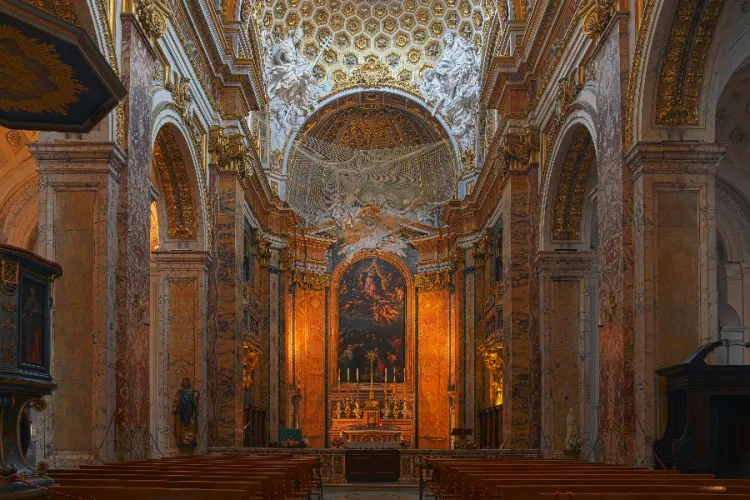The interior of the Church of St. Louis of the French (San Luigi dei Francesi) in Rome, Italy/ Livioandronico2013 via Wikimedia (CC BY-SA 4.0).
The European Union is organizing weekly walks in May and June to visit 26 of Rome’s churches with historic ties to European nations.
From the Church of St. Louis of the French, with its Caravaggio paintings, to St. Bridget in Campo de’Fiori, which served as a refuge for Swedish Catholics during the Reformation, the city of Rome is filled with “national churches” built to serve pilgrims from a particular country.
The Delegation of the European Union to the Holy See is launching the Iter Europaeum initiative to mark the 50th anniversary of diplomatic relations between the EU and the Holy See.
Each Sunday will include liturgies, concerts, and guided tours to three or four churches, each selected by a different European embassy to the Holy See.
The church walk will kick off on May 9 with a Mass offered by Cardinal Angelo De Donatis, vicar general of Rome, at the Archbasilica of St. John Lateran.
Following Mass, the invited participants in the Iter Europaeum will visit the Basilica of Four Crowned Martyrs, a church that dates back to the fourth or fifth century, with Egils Levits, the president of Latvia.
The walk will continue to the Basilica of St. Clement, selected by the embassy of the Czech Republic to the Holy See because it contains the remains of St. Cyril, who served as a missionary in Great Moravia in the ninth century.
The day concludes at Hungary’s national church in Rome, the Basilica of St. Stephen in the Round on the Caelian Hill, which is dedicated to both St. Stephen, the first Christian martyr, and St. Stephen I, the first king of Hungary.
The Sunday church walks will continue through June 27 and additional information posted in each of the selected churches will remain on display for several months.
On May 16, the embassies of Portugal, Romania, and France will lead visits to the churches of St. Antonio of the Portuguese, San Salvatore alle Coppelle, and St. Louis of the French respectively.
Greece, Spain, and Malta will be featured the following week at the Church of St. Theodore on the Palatine Hill, St. Peter in Montorio, and the Church of St. Mary of the Priory.
On May 30, the itinerary will include Croatia’s national church in Rome, St. Jerome of the Croatians, the Church of St. Isodore selected by Iceland’s embassy, and the Lutheran Evangelical Church, chosen by the German embassy to the Holy See.
The program for June 6 begins at the Church of St. Stanislaus of the Poles, followed by the Church of the Gesù, selected by Lithuania, and the Basilica of Saint Mary above Minerva, chosen by Finland.
On June 13, there will be visits to St. Paul alla Regola, the Church of St. Julian of the Flemings, St. Bridget, and Our Lady of the Soul with Bulgaria, Belgium, Sweden, and Austria respectively.
The first visit of June 20 will be led by the Italian embassy at St. Mary of the Angels atop the Capitoline Hill. Luxembourg’s embassy to the Holy See will then bring the group to the Sacred Heart of Jesus Church, followed by a visit to the Basilica of St. Mary Major sponsored by Slovenia.
The final Sunday, June 27, will include a visit to the church of the Teutonic Cemetery, next to St. Peter’s Basilica, with the embassies of the European Union, Denmark, and Estonia, as well as the Church of St. Michael and St. Magnus with the Netherlands, and the Pontifical Slovak College of St. Cyril and Methodius with Slovakia.
Ambassador Alexandra Valkenburg-Roelofs, the EU’s ambassador to the Holy See, told Vatican News May 4 that people can also participate in the church visits “virtually” as all of the information will be made available online, at the website www.itereuropaeum.eu, starting on May 9.
“We were looking for a way to celebrate 50 years of diplomatic relations, and we have found one,” she said.
Source: CNA

